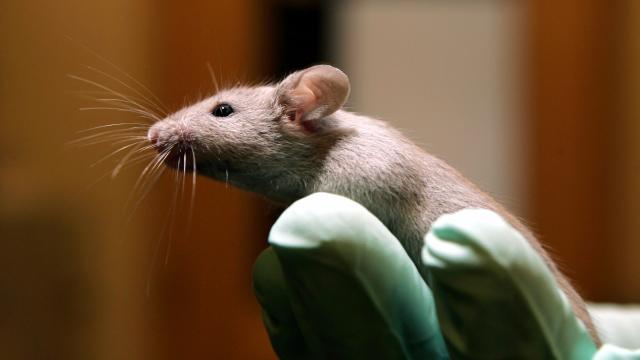Gender discrimination in science doesn’t just affect women scientists. It also skews the results of animal research, as a new paper out this week describes. Animals used in experiments are still overwhelmingly male, thanks to outdated stereotypes that hormones like estrogen can distort an experiment’s findings.
The argument comes courtesy of Rebecca Shansky, an associate professor in the Department of Psychology at Northeastern University in Boston. In her paper, published Thursday in Science, she outlines the long history of relying on male lab animals, particularly mice, for studies looking into the latest experimental drug or better understanding neurological illness. She also handily explains why this gender preference is completely unnecessary and could actually lead to serious harms.
Historically, male mice are thought to be less of a hassle to use in experiments since they don’t go through estrus, or a menstrual period. The hormonal changes female mice go through while on their period, it’s been assumed, could affect how they respond to a drug or their brain scan results. However, as Shansky notes in her paper, this assumption has never really been backed up by much data.
A 2014 review of nearly 300 neuroscience studies involving mice, for instance, found that there was no major difference in the variability of data obtained from male or female mice brains, no matter what stage of their menstrual cycle females were in. In some cases, for certain behavioural traits, there were actually more differences among male mice than between females.
Yet another review in 2016 found the same basic pattern with rats used in neuroscience studies.
What this really shows, Shansky said, is that these assumptions are an extension of long-held beliefs about women in general, extending back to the 19th century.
“One of the most deep-seated misconceptions about the human psyche is that men are simple and women are complicated,” she wrote. “More than 100 years later, this idea still shapes not just how society perceives women but also how biomedical scientists approach animal research.”
Of course, that’s not to say that females and males can’t have important differences that scientists should take into account. Any number of factors can shift an animal’s response to something like a headache drug, including hormones. But that’s just the variability scientists have to deal with and chronicle as part of their job, not avoid altogether. And when scientists exclude female animals from this essential basic science, Shansky argues, that can leave behind some glaring blindspots down the road.
“So on a clinical level, one of the things that has come out of not studying female animals has been a higher rate of adverse side effects for medications in women,” she said in a press conference discussing her paper, highlighting the example of the prescription sleep aid Ambien in particular.
“Ambien went through all of the preclinical work, clinical trials, they came out with the recommended dose, and it turns out that women should actually be taking half the dose that men do, because they metabolize the drug really differently.” Ambien now carries a black box warning from the FDA.
Things have been slowly changing on the human side, with government-led initiatives to include more women (including pregnant women) in clinical trials. On the animal side, the National Institutes of Health instituted the Sex as a Biological Variable (SABV) rule in 2016, essentially mandating that scientists whose research is publicly funded include female animals in their studies Canada’s version of the NIH created a similar rule that year. Only recently have we begun to see these changes affect published research.
But while the SABV is a welcome, needed change, Shansky said, things could still be better. The NIH, for instance, doesn’t provide any formal advice on how scientists should study both genders, which has led some to first perform experiments with male mice, then female mice.
“This strategy is flawed, however, because it requires the demonstrably false assumption that what is discovered in males is how the brain really works, whereas in females, the same neurobiological processes are probably more complicated,” Shansky wrote.
A better way, she advocated, is to just start with a mixed gender group. If there are no major differences spotted between the two groups, the researchers can proceed as normal, but if there are, they can increase the number of female and male mice used in future experiments and look for these distinctions again. That way, you can be sure that you’re really spotting an important, gender-influenced difference in your research—not just making the sort of assumption you’d find in a 19th-century phrenology textbook.
“Women are not more complicated than men, and hormones are not a ‘female problem’ for animal research,” Shansky wrote. “When these assumptions are finally abandoned and male and female animal brains viewed as equally informative to the field, the potential for neuroscience research to advance mental and neurological health for everyone is likely to improve.”
